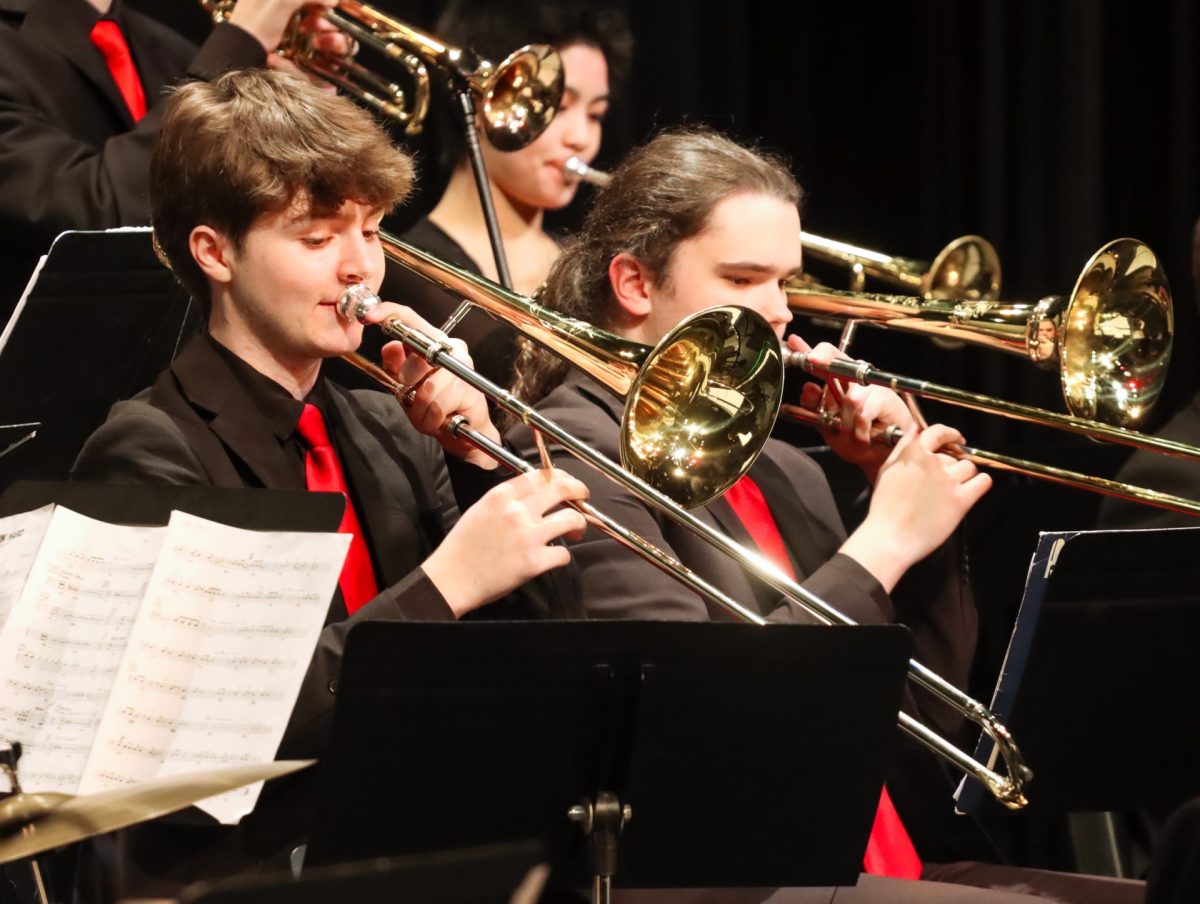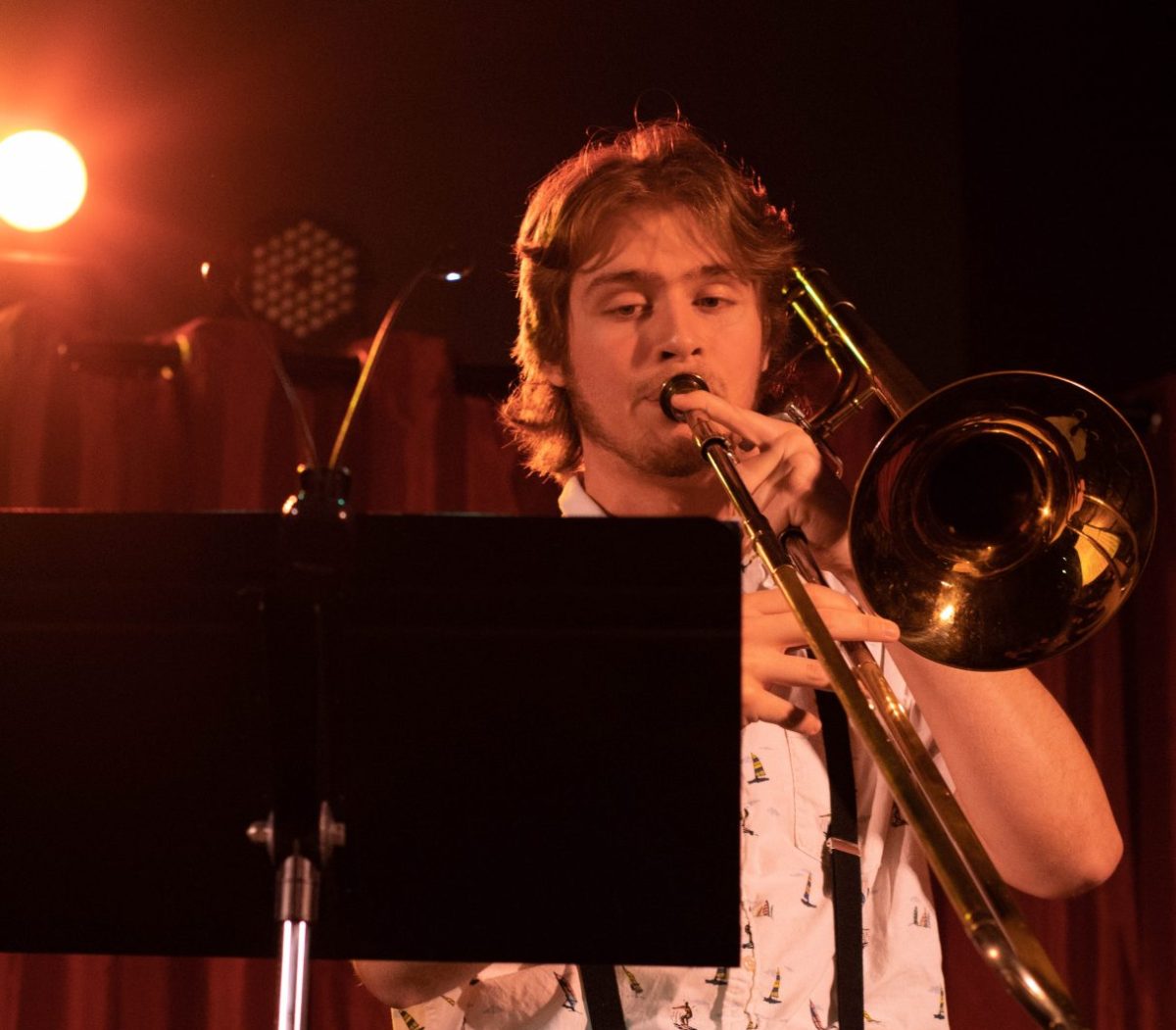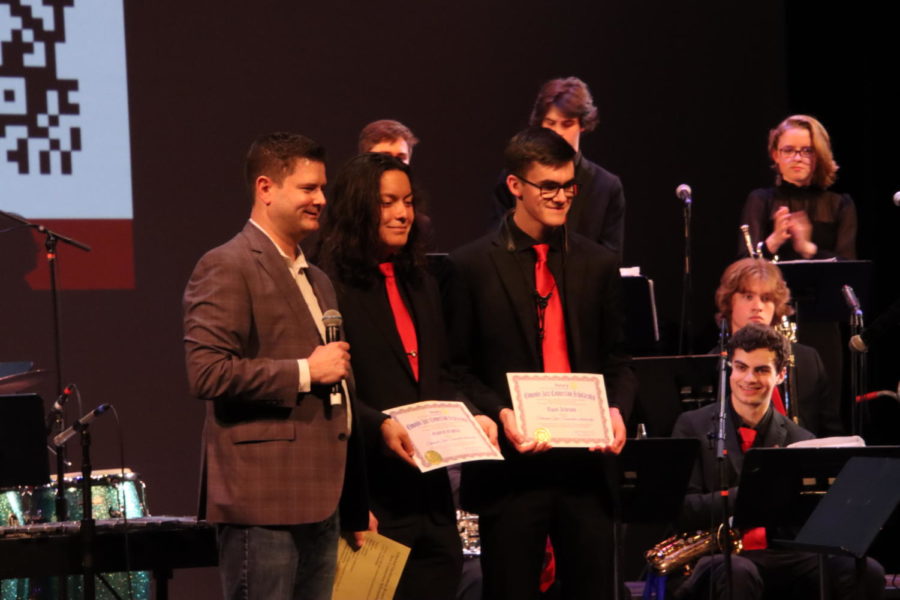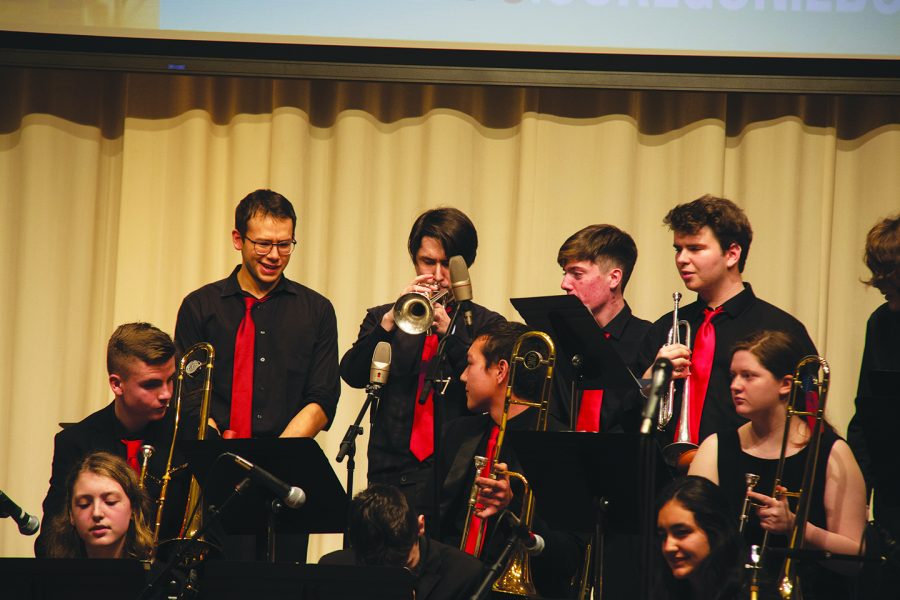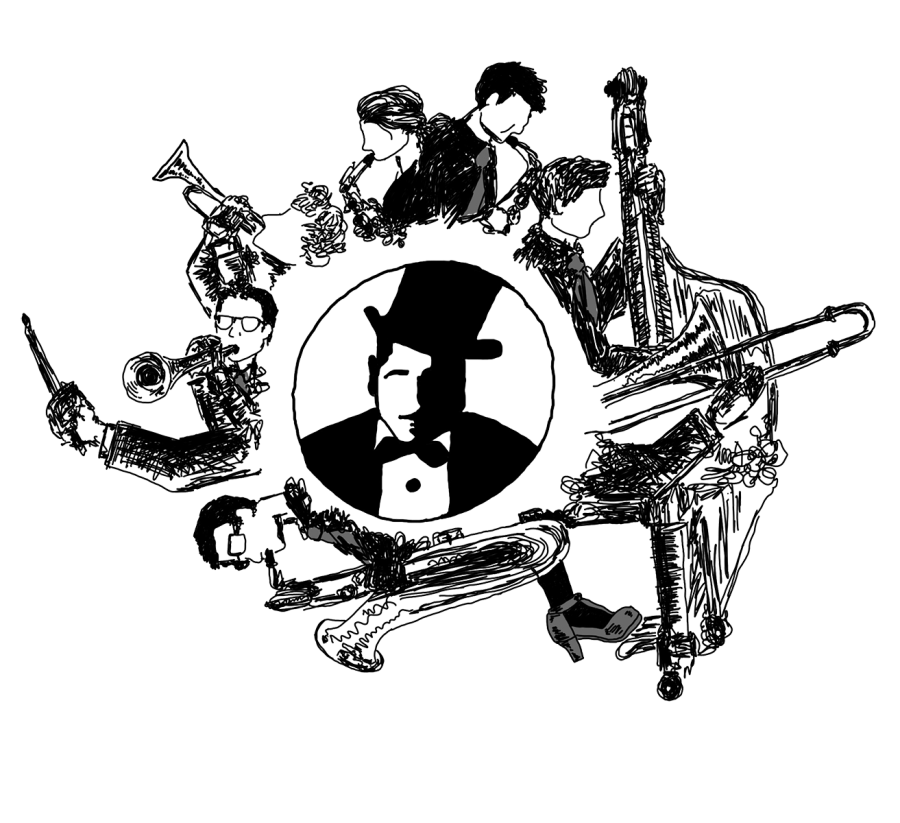Backstage on December 17, the large MTHS Symphonic Band whispered excitedly before they went on stage. “It’s our last concert of the decade,” someone quipped, probably for the hundredth time. The Winter Concert has been a fixture for music programs across the nation, and MTHS is no exception. It is tangible proof that the hours of work they’ve put in over the course of first semester wasn’t wasted. The moment came upon them. They took their seats on stage.
“Twas in the Moon of Wintertime” is a somewhat niche carol that is more familiar to our neighbors to the north. Believed to be the first carol written in North America, this ethereal arrangement evokes some of that ancient mystique. The unconventional nature of this piece means that this concert won’t fall into the trap of relying too heavily on songs in the common vernacular, which allow the audience’s minds to autocomplete any technical lapses. Any awe inspired from this concert would have to come from skill.
Director Darin Faul introduced the next piece, “The Willows of Winter” by BJ Brooks. Its meter, 5/4, is a little unusual but lends a sweeping quality to the work. Quietly majestic, its percussion refrains from being overbearing and instead compliments the delicate instrumentation. Thoughtful and reflective, it swells to something expansive.
The quirk in this next song was in its subject matter, trains. In jazz and blues, songs about trains are the very opposite of a quirk – it’s a tried and true formula for an instantly atmospheric number. However, this trope is nearly unheard of in symphonic music. “Night Journey” was mystic, with a stirring timpani performance from senior Nate Jennings. Depth and drama came from the reed section, flutes interrupted and the percussion section added that train-like quality. This arrangement was spacy, and suspended harmonies added tension. It came to a majestic conclusion, and that was the end of the Symphonic Band’s set.
Chamber Winds would not fit in a chamber. No, they could hardly fit upon the stage and had to scramble for more chairs. However, this simply speaks to the concentration of talented musicians that attend MTHS.
Their first piece was “Shockwave,” with assistance from the Percussion Ensemble. Percussion Ensemble is actually a separate class, which meets with instructor David Solomon. Thus, they have only practiced with the rest of the band a handful of times at the most.
Beginning with a rolling hit from percussion, this rhythm-heavy song featured themes that fluttered in round throughout the group, hence the name. It was cinematic, and some colorful chord progressions recontextualized simpler melodies. The xylophone was the star of the percussion section, and expressed the full dramatic range of the instrument.
“Greensleeves” is an immortal sort of tune (the fact it’s stuck around since the 16th century should demonstrate its enduring popularity), but this refreshing version was arranged by Alfred Reeves. During the introduction, conflicting themes dance over each other, then give way to the classic sober melody that Elizabethans just couldn’t get enough of. First Clarinet and senior Ella Seavers was featured at the end for a solo. She has a peculiar habit of tracing concentric circles in the air with the tip of her clarinet, impressing a snake charmer-like fixation upon the audience
Next was a medley of Alan Silvestri’s compositions for the modern Christmas classic known for its touching story and uncanny valley animation, “The Polar Express.” Consisting of “The Polar Express,” “Believe,” “When Christmas Comes to Town” and “Spirit of the Season.” “Believe” has a slight touch of melancholy that makes for memorably poignant Christmas instrumentals, such as Vince Guaraldi’s “Christmastime is Here” or Howard Blake’s “Walking in the Air.”
“The Polar Express,” yet another among the rare breed of classical train songs, chugged along in a rollicking sort of way. “Spirit of the Season” is a bouncy and optimistic flute feature displaying the star power of MTHS’ flautists and the sheer excitement of the night’s jingle bell operator.
Finally, Chamber Winds rendered a cover of “Sleigh Ride.” Leroy Anderson, its composer, is the man responsible for many familiar songs you don’t know the name of – fun, fluffy show pieces were his specialty. His trademark was sometimes unorthodox percussion, such as alarm clocks or typewriters. In “Sleigh Ride” it’s the addition of sticks, a large instrument that produces a whip sound. This rendition was wholly true to the original, and contrasted with the Glenn Miller version of the same song that Jazz 1 played the week prior. Bouncy and light, the concluding horse’s whinny was provided on trumpet this time by senior Elijah Sather.
As the holiday-themed lighting effects faded and the house lights came up, the audience met the performers as they filtered out of the band hallway. The bands had succeeded and proved their point. The work they did that night was the fruition of the passion of dozens of talented students, and will serve as the stick against which the bands’ spring concert is measured.


